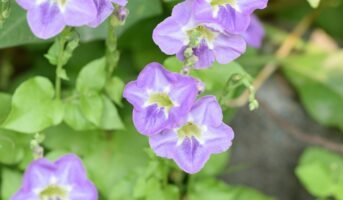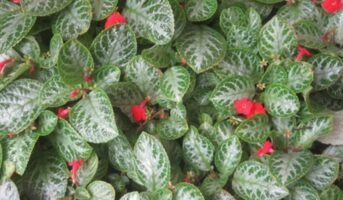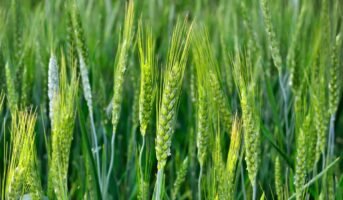Neem oil, extracted from the seeds of the neem tree (Azadirachta indica) indigenous to the tropical landscapes of Burma, India and Sri Lanka stands as an organic pesticide. Demonstrating efficacy against an array of insect pests, mites, and select fungal diseases, it has become a versatile solution in pest management.
The neem oil products available today cater to diverse needs, addressing both disease-causing fungi and insect pests. It is important, however, to examine the product label carefully to secure a formula used for making the product that will solve the problem.
Neem Oil: Steps for applying
- Before applying neem oil, carefully review the product label. Should it be in concentrated form, read precisely the label instructions to prepare the required amount.
- Initiate the application of neem oil on your chosen plant by commencing from the uppermost part. Notably, unlike several pesticides with sustained effectiveness post-application, neem oil exhibits no impact once it has dried; its biodegradability facilitates swift breakdown into harmless components.
- Continue spraying until the entire plant is saturated, causing neem oil to cascade from the leaves.
- After 3-4 days, conduct a comprehensive inspection for any persisting pests on your plant. If their presence endures, reapply the neem oil product as necessary.
Neem Oil: Benefits
Neem oil stands out as a reliable and safe pesticide suitable for both indoor and outdoor use. Its safety extends to humans and pets, alleviating concerns when applying it to combat issues like aphids or fungus gnats on your indoor plants. When employed outdoors, neem oil displays minimal toxicity towards beneficial organisms like bees, birds, and mammals. However, it is advisable to administer pesticide sprays during the early hours of the day when pollinators are less active, reducing the risk of direct contact.
What sets neem oil apart is its biodegradability, swiftly breaking down in soils, water, and plant surfaces. Notably, it poses no known harm to earthworms and can serve as a soil drench for addressing specific pests such as root nematodes. Moreover, numerous neem oil products boast certification as organic by OMRI, adding an extra layer of assurance to their use.
Best neem oil for pest control
Various formulations of neem oil can be found in gardening stores, but it’s crucial to recognize that they don’t all operate in the same manner. To identify the type of neem oil you’re buying, examine the active ingredients listed on the bottle. There are three primary neem oil formulations: clarified hydrophobic extract of neem oil, azadirachtin, and cold-pressed neem oil.
In the absence of azadirachtin’s insecticidal properties, certain products function by suffocating insects and covering leaves with oils to combat foliar disease. However, they don’t interfere with insect growth and development. Nevertheless, some of these products are combined with other pesticides, like pyrethrin, to enhance control.
There are also products containing pure extracts of azadirachtin, which are often geared towards commercial use and tend to be pricier. Therefore, for home use, the most effective products are those containing cold-pressed neem oil as the active ingredient, which includes azadirachtin.
Neem oil: What type of pest gets affected?
Neem oil serves as a robust defense against an array of pests affecting both indoor and outdoor plants, along with providing effective protection against fungal diseases such as powdery mildew and leaf spot. To ensure optimal results, it is prudent to examine the product packaging and confirm the inclusion of the specific insect or fungus you intend to repel. Below is a comprehensive list enumerating the common pests that neem oil proficiently combats:
- Aphids, known for their sap-sucking tendencies, find their deterrent in neem oil.
- Beet armyworms, responsible for foliage damage, are effectively repelled.
- Various beetle species, notorious for plant destruction, succumb to the deterring prowess of neem oil.
- Cabbage worms, notorious for ravaging cruciferous crops, are kept at bay.
- Caterpillars, with their voracious appetite for plant leaves, face resistance from neem oil.
- Fungus gnats, a common nuisance in soil, are thwarted by the application of neem oil.
- Japanese beetles, recognized for their destructive feeding habits, are effectively managed.
- Leaf miners, known for tunneling through leaves, encounter deterrent action from neem oil.
- Locusts, a threat to vegetation, find neem oil inhibiting their damaging activities.
- Mealybugs, notorious for their sap-sucking nature, are effectively repelled.
- Mites, tiny yet destructive, are kept in check through the application of neem oil.
- Moth larvae, responsible for plant damage, are effectively controlled.
- Mushroom flies, often a nuisance in cultivation, are kept at bay with neem oil.
- Nematodes, microscopic yet harmful, find their activity hindered by neem oil.
- Thrips, known for feeding on plant tissues, encounter resistance from neem oil.
- Whiteflies, a common greenhouse pest, are effectively managed through neem oil application.
Neem Oil: Which plants to avoid?
It’s advisable to exercise caution when applying neem oil to certain herbs like basil, caraway, cilantro, dill, marjoram, oregano, parsley or thyme. These herbs may not react well to neem oil. When using neem oil on plants with delicate or wispy leaves, such as arugula, lettuce, peas, and spinach, it’s crucial to be careful, as neem oil has the potential to cause burns on foliage.
Products containing neem oil often come with labels that encompass a broad spectrum of crops, spanning herbs, vegetables, fruits, nuts, and ornamental plants. To ensure proper application, it’s imperative to thoroughly read and follow the instructions provided on the label. Regardless of the type of plant under treatment, neem oil can induce damage by causing burns on the foliage. It is advised to refrain from using neem oil on newly transplanted or stressed plants.
While it’s true that complete coverage of plants with neem oil is necessary for the pesticide to be effective, it is a prudent practice to conduct a small-scale test in a specific area initially. If there are no signs of toxicity in the tested area, the entire plant can then be treated with neem oil. This cautious approach helps mitigate any potential adverse effects on the plant.
Neem Oil: Toxicity
Neem oil displays a remarkable level of safety for birds, mammals, bees, and plants, being practically non-toxic to these organisms. However, it does hold a degree of toxicity for fish and other aquatic life forms. Specifically, the presence of azadirachtin in neem oil renders it moderately toxic to aquatic animals. It’s crucial to note that for insects to be affected, they need to consume the treated plant. Consequently, bees and other pollinators are unlikely to face harm in this scenario.
FAQs
How should I effectively apply neem oil to my plants?
Neem oil can be applied either as a foliar spray or a soil drench. To do this, dilute the neem oil concentrate with water and incorporate a small amount of liquid soap. The soap aids in the blending of water and oil. Using a pump sprayer is recommended for extensive coverage, and reapplication should be done as necessary. However, it's crucial to avoid over-spraying, as frequent applications can potentially harm or even kill fruit trees.
What are the potential drawbacks of using neem oil on plants?
Irrespective of the plant type, neem oil has the potential to harm plants by causing foliage burns. It is not advisable to use neem oil on recently transplanted or stressed plants. Even though complete coverage of plants with neem oil is essential for the pesticide's effectiveness, conducting a small-scale test on a specific area before widespread application is a prudent measure.
Is the consumption of neem oil safe?
The ingestion of neem oil is fraught with potential toxicity risks, leading to issues such as metabolic acidosis, seizures, kidney failure, encephalopathy, and severe brain ischemia, especially in infants and young children. Neem oil should not be ingested independently, particularly by pregnant women, those attempting to conceive, or children.
Can neem oil be safely used on all types of plants?
While neem oil is generally considered safe, some plants may exhibit sensitivity to horticultural oils and soaps. It is advisable to conduct a preliminary test on a small area before applying the product to the entire plant. Waiting for 24 hours after application allows for the assessment of the treated area for any signs of damage.
Are there alternatives to neem oil for plant care?
Although neem oil has been a traditional choice for organic gardeners dealing with pests, rosemary oil may offer a potentially more effective solution.
Can neem oil be applied to vegetables?
Neem oil is safe for use on both ornamental and edible crops, including herbs and vegetables, up to the day of harvest. However, caution is needed, as applying neem oil to drought-stressed plants can result in foliage burns. It's advisable to thoroughly water plants before using neem oil.
Can neem oil be sprayed on the soil of houseplants?
Indeed, neem oil, when applied as a soil drench, not only serves as a pesticide but also prevents fungal issues in the soil. This makes neem oil an ideal choice for those who prefer an organic approach, steering clear of harmful chemicals. Houseplants with numerous leaves, such as hoyas, philodendrons, and pothos, can benefit from preventive neem oil mists.
| Got any questions or point of view on our article? We would love to hear from you. Write to our Editor-in-Chief Jhumur Ghosh at [email protected] |
Anil Shah, is your go-to source for property market insights. He excels at understanding and explaining the latest trends in residential real estate and making complex real estate concepts easier to grasp. Anil’s fact-based analysis helps buyers and investors make sound decisions in the housing sector.











